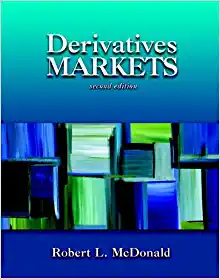Question
Roman Roads has a number of capital projects available for investment this year but has access to a limited amount of capital. Specifically, the firm
Roman Roads has a number of capital projects available for investment this year but has access to a limited amount of capital. Specifically, the firm has arranged to secure a $25 million bond sale with their investment bankers and has $84 million worth of retained earnings and remaining seed capital that its directors are prepared to re-invest into new opportunities. They would like your advice on which projects they should pursue (all asset pools are quite large and would remain open after the projects are completed).
According to the firm's chief financial officer, Roman Roads has established its capital structure (target D/E ratio of 0.8) in line with the static trade-off theory so it should not be changed. The $25 million in new bonds will be sold off with a 7.4% annual coupon rate for total floatation costs of 2.7% (Roman Roads is not very well known). The firm's common stock trades on the TSX Venture Exchange for $14.60 per share but it pays no dividends. Independent analysts have estimated that the company has a beta of 2.2 with the broader market, which is expected to return 10.65% over the long run. Your best estimate for the average risk-free rate for the life of the projects 3.3%. Roman Roads pays an average tax rate of 25%.
Project 1- $32 million upfront cost, $7.3 million after-tax profits each year for 8 years, salvage for $4.2 million, CCA rate on assets = 20%
Project 2- $22 million upfront cost, $5.8 million after-tax profits each year for 5 years, then $3.4 million after-tax profits for 4 more years. salvage assets for $6 million, CCA rate = 8%
Project 3- $44 million upfront cost, $10 million in yearly after-tax profits for 20 years, no salvage, $20 million maintenance expense every 5 years (not paid at the end of the project's life), CCA rate = 10%
Project 4- $20 million upfront cost, $7.1 million in yearly after-tax profits for 3 years, salvage for $6.8 million, CCA rate on assets = 20%
Project 5- $29 million upfront cost, $8.4 million in yearly after-tax profits for 6 years, salvage for $12 million, requires $4 million in working capital (only half is recovered at project's end), CCA rate = 15%
a) How much money will Roman Roads actually get from selling $25 million worth of bonds to investors?
b) If the capital structure is fixed, how much is Roman Roads' capital budget for the year?
c) What cost of capital should be applied to these projects?
d) Which of the 5 projects above should be pursued given the firm's budget restriction?
Step by Step Solution
There are 3 Steps involved in it
Step: 1

Get Instant Access to Expert-Tailored Solutions
See step-by-step solutions with expert insights and AI powered tools for academic success
Step: 2

Step: 3

Ace Your Homework with AI
Get the answers you need in no time with our AI-driven, step-by-step assistance
Get Started


